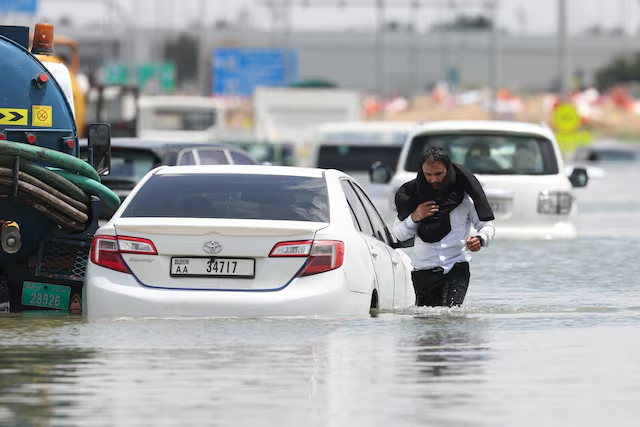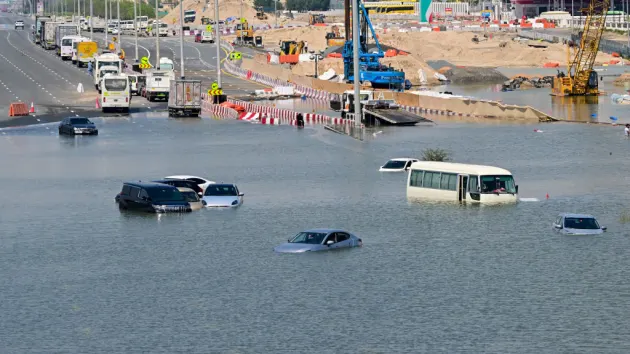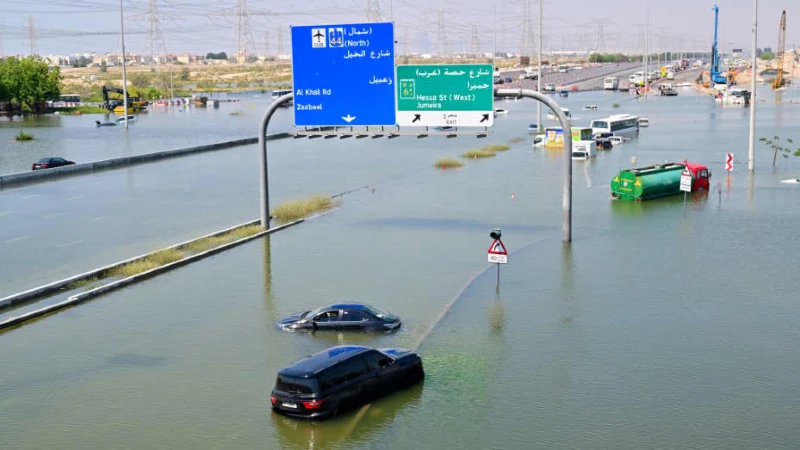The recent flooding in Dubai last week starkly demonstrated the critical failures of urban engineering to cope with the challenges posed by climate change. Despite the sophistication and rapid expansion of cities like Dubai, built on what were once uninhabitable terrains, these areas lack adequate drainage systems to handle the increasing incidences of extreme weather events.
In a telling sign of the times, areas across the United Arab Emirates experienced unprecedented rainfall last Tuesday, with some regions receiving more than 10 inches, matching, or exceeding their annual rainfall averages. Dubai itself saw substantial downpours, highlighting the inadequacy of its infrastructure to manage such sudden deluges effectively. Despite rumors attributing this unusual weather to the UAE’s cloud seeding efforts, official sources and experts have debunked these claims, as reported by CNBC.
“Dubai was built on sand, which naturally absorbs water,” explained Ana Arsky, CEO of the environmental startup 4 Habitos Para Mudar o Mundo, during an interview with CNBC at last week’s Web Summit Rio. “But when you cover that with concrete, you lose those natural absorption capabilities.”

This urban sprawl not only seals off the ground from absorbing rainwater but also exacerbates the waste management crisis. Dubai, like many growing cities, struggles with the disposal of increasing volumes of trash, which often ends up in landfills, impeding natural water drainage paths further.
Even cities like New York have encountered similar flooding woes, with significant rainfall overwhelming the old drainage systems, causing widespread disruptions last fall.
“Rainwater drainage systems are not adapted for the flows we are currently seeing with climate change and extremely concentrated rainfall,” stated Tiago Marques, co-founder and CEO of Greenmetrics.AI. His company, which works with city officials in Portugal, uses advanced sensor technology and data analytics to improve urban water management.
Marques highlighted the challenges even when preventative measures are taken: “In Porto, even after cleaning the drains, unusual rainfall swept debris back into these systems, blocking them and causing severe flooding.”

Greenmetrics.AI has implemented smart sensor technology, including LIDAR, to monitor flood-prone areas and provide early warnings to minimize damage and casualties. “What used to happen every 100 years now occurs every 10 years, and the floods that happened once a decade are now biennial events,” Marques added, emphasizing the urgency for cities to adapt to these changing patterns.
More To Discover
In response to these challenges, companies like Vapar in Australia and the U.K., and Arsky’s 4 Habitos Para Mudar o Mundo in Brazil, are developing innovative solutions to enhance urban resilience. Vapar uses robots to inspect and maintain sewer systems before storms hit, while Arsky’s company helps firms and consumers properly categorize waste and develop new building materials that allow for natural water absorption.
As the world grapples with more frequent and severe flooding, the message is clear: “Climate change has no specific address,” Arsky warns. The Dubai floods serve as a global wake-up call, pressing the need for urban areas everywhere to rethink and revamp their infrastructure to withstand the new normal of extreme weather conditions.



















